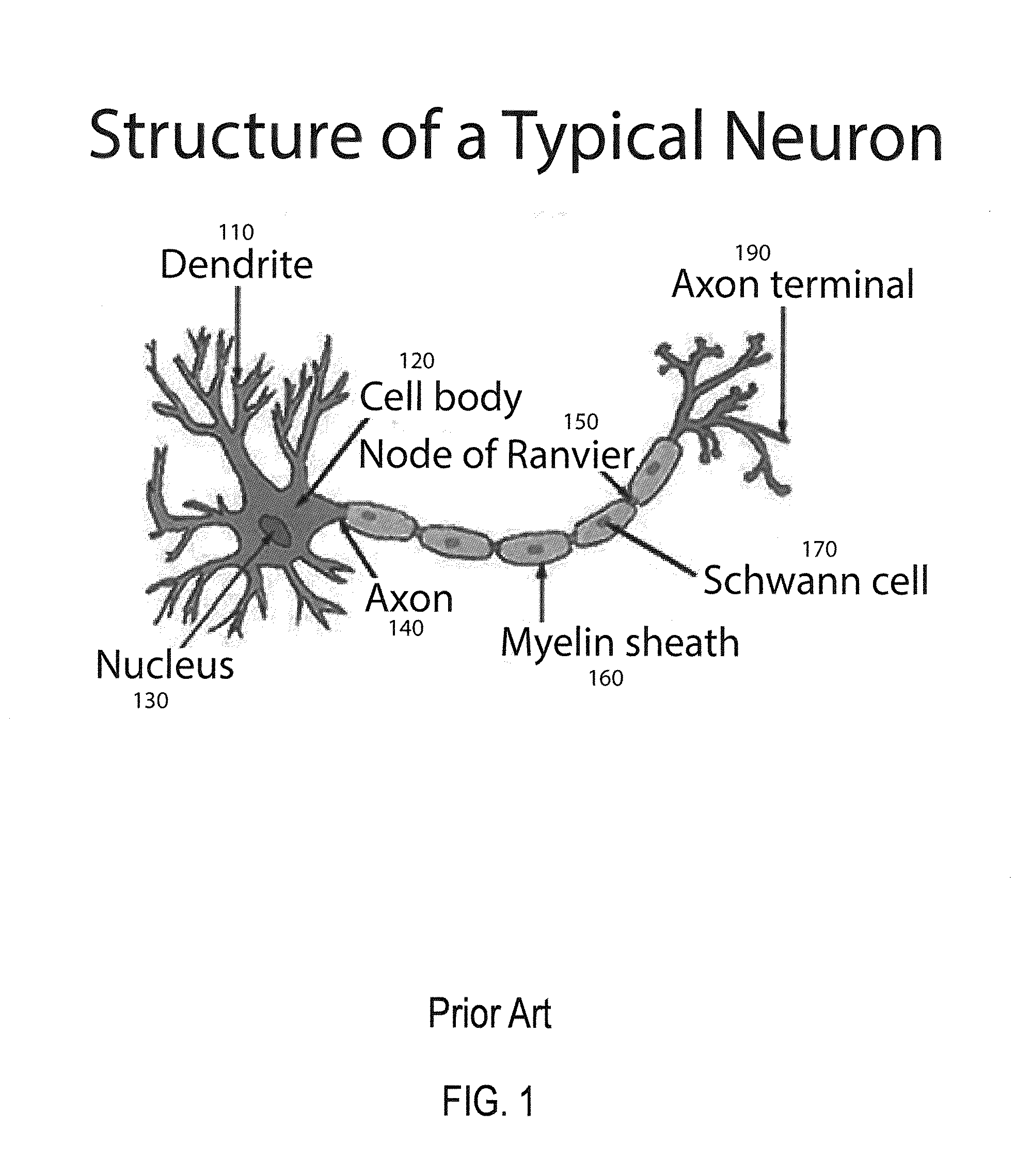Method and apparatus for constructing, using and reusing components and structures of an artifical neural network
a neural network and artificial neural technology, applied in the field of methods and apparatus for constructing an artificial neural network, can solve the problems of not having a stable solution, neuron to fire, and unclear how learning and memory work in the human brain
- Summary
- Abstract
- Description
- Claims
- Application Information
AI Technical Summary
Benefits of technology
Problems solved by technology
Method used
Image
Examples
Embodiment Construction
[0080]In accordance with an embodiment of a method and apparatus for constructing, using and reusing components and structures of an artificial neural network, a neuroscience-inspired dynamic artificial neural network (NIDA or a dynamic adaptive neural network array (DANNA) of basic neuron and synapse elements or combinations of substructures thereof may be constructed and then utilized to identify useful components, structure and substructures. A useful substructure of an artificial neural network, by way of example, may be an affective system, a learning algorithm, a computational network, a central pattern generator, an image recognizer and the like. For example, in a classification task such as a character recognizer which generally recognizes all characters, an artificial neural network may have implanted therein a numeric digit recognizer. Also, as artificial neural networks are constructed for tasks such as one of control, detection and classification, some network substructu...
PUM
 Login to View More
Login to View More Abstract
Description
Claims
Application Information
 Login to View More
Login to View More - R&D
- Intellectual Property
- Life Sciences
- Materials
- Tech Scout
- Unparalleled Data Quality
- Higher Quality Content
- 60% Fewer Hallucinations
Browse by: Latest US Patents, China's latest patents, Technical Efficacy Thesaurus, Application Domain, Technology Topic, Popular Technical Reports.
© 2025 PatSnap. All rights reserved.Legal|Privacy policy|Modern Slavery Act Transparency Statement|Sitemap|About US| Contact US: help@patsnap.com



